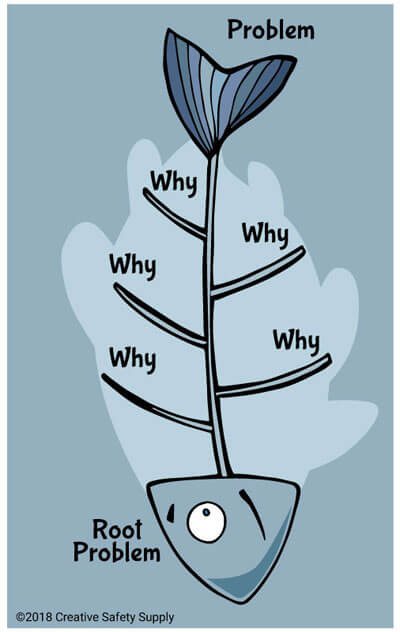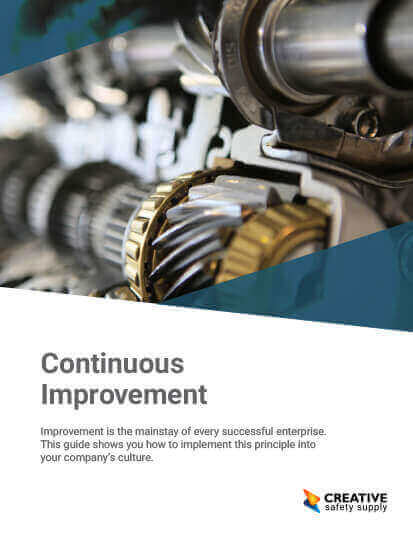
The Fishbone Diagram, formally named the Ishikawa diagram, is a tool for managers to get to the root cause of an issue in production. This diagram is used in Root Cause Analysis and is a visual representation of the 5 Why’s strategy. Starting at the top of the diagram pictured on the left, the tail of the fish represents the main problem or issue that is trying to be solved. Each bone of the fish going down represents a “Why” in the analysis method, ending up at the head of the fish, symbolizing the true root of the problem.
How does a fishbone diagram work?
The fishbone diagram method is used to truly get to the bottom of an issue by using a process where you ask why five times in order to get to the root cause of a problem. Here is an example of completing a fishbone diagram by using the five whys:
 1. Why won’t the car start?
1. Why won’t the car start?
- The battery is dead.
2. Why is the battery dead?
- Because the alternator is not working properly.
3. Why isn’t the alternator working?
- Because the serpentine belt has broken.
4. Why is the serpentine belt broken?
- Because the belt was not replaced when worn.
5. Why wasn’t it replaced?
- Because the owner did not follow the recommended service schedule
As shown from the example, the true root of the problem is identified after the question why is asked five times. The car didn’t start just because the battery is dead, but the car wouldn’t start because maintenance was not kept up by the owner. By fixing that problem and not just charging the battery, the owner of the car can avoid this problem, and many others, in the future.
When these reasons are listed on a fishbone diagram, it's easier to understand the root cause -- even if someone has just learned of the problem.
Important note: Ask “Why” until the root cause is discovered, even if it is more than five times!
Similar Glossary Terms
- Root Cause Analysis
- Spaghetti Diagram
- Network Diagram
- Affinity Diagram
- SIPOC Diagram
- Near Miss
- A3 Reporting
- RCM (Reliability Centered Maintenance)
- Critical Path Method (CPM)


